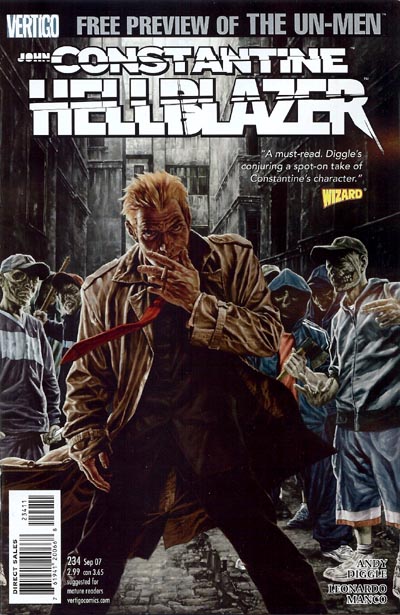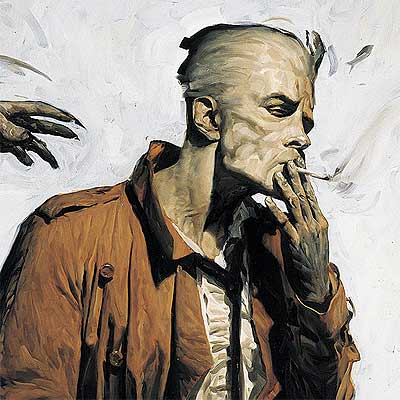The Science Behind Counterfeit Cancer Drugs
This week, U.S. officials intercepted 120 vials of fake Avastin, created by devious individuals looking to make a quick buck. It's easy to see why the crooks targeted this drug: A single year of therapy with a monoclonal antibody, like Avastin, can cost upwards of $100,000 a year in many cases.
Monoclonal antibodies are a burgeoning area for pharmaceutical companies, thanks to their ability to target a single type of cell. The antibodies act with a specificity that small molecule drugs cannot. Why are these drugs so expensive, and how likely are you to wind up with a counterfeit version instead of the real deal?
An antibody is a large protein produced as a part of targeting system for immune responses in your body. When an antibody finds its very specific destination, it attaches to the target and signals an immune response — often deletion of foreign bacteria or viruses. In the case of monoclonal antibody pharmaceutical therapies, these antibodies can deliver a drug or chemotherapy agent to the site as well.
The "monoclonal" tag comes from the manner in which the antibodies are created. They are developed in a laboratory, using a line of fused myeloma and mouse spleen B cells. The antibodies are not synthesized using chemical compounds, but created indefinitely by clonedimmortal cell lines.
To retrieve the antibodies, the manufacturers must harvest a cell culture, and then purify the antibodies through a series of steps, including centrifugation, site-specific column filtration, and precipitation. Once this process is completed, the drug-makers have removed proteins and other cell debris present in the cell culture, leaving only the desired antibodies.
Monoclonal antibody therapy is much more intrusive than popping a pill three times a day with food. The therapy requires intravenous injections, and, in most cases, a three to four hour outpatient appointment with a designated care provider, with multiple weekly infusions necessary in most cases.
The risk of rejection is common, as your body may perceive the monoclonal antibodies as harmful, making outpatient infusion necessary to combat any complications that might occur during the process. Some monoclonal therapies used for non-life threatening conditions, like psoriasis, are available at your local pharmacy with a prescription, but these treatments still require an injection.
The most expensive drugs in the world
Pharmaceutical therapies make use of antibodies to direct drugs to a specific type of cell – in some cases, a radioactive agent directed to a tumor cell. This targeting method allows the radioactive material to pass through the human body and minimize the exposure of nearby, non-target cells to radiation.
Muromonab-CD3, a monoclonal antibody aiding patients experiencing tissue rejection after organ transplants, became the first monoclonal antibody to hit the market in 1986. Over thirty antibody therapies are on the market at the moment, with the drugs used for directed chemotherapy, relieving the effects of Crohn's disease, transplant rejection issues, psoriasis, andpost-menopausal osteoporosis.
Several pharmaceutical companies streamlined their monoclonal antibody production process by making use of the U.S. Orphan Drug Act, which subsidizes pharmaceuticals created for a small target group.
Eculizumab, developed by Alexion Pharmaceuticals, is used for treatment of Paroxysmal nocturnal hemoglobinuria, but only eight to ten thousand individuals in the United States have PNH. Eculizumab held the dubious distinction of being the world's most expensive drug for the past several years, coming in at $409,500 for a one year supply. The presence of government subsidies aids in providing treatment for these individuals, and in the case of monoclonal antibody therapy, clever pharmaceutical companies can use the funding to lay a foundation for purifying monoclonal antibodies with commercial upside in the future.
The use of monoclonal antibodies in drug therapy has opened up a whole new realm of benefit to the patient, but, at the same time, paying for these treatments can be a nightmare for insured. The treatments are often outside the realm of possibility for the uninsured patient unless a nonprofit donor is involved.
A course of monoclonal antibody treatment can easily cost thousands of dollars, with most insurance companies throwing away the typical $10/$30/$50 co-pay scheme and requiring patients to pay a percentage (20 to 30%) of the total cost. If you are waiting in line for a new kidney and need the treatment after rejection issues and all traditional pharmaceutical routes are exhausted, monoclonal antibody therapy is a savior, but an expensive one.
The high cost of monoclonal antibody therapies makes vials a bizarre target for counterfeiting. Turkish counterfeiters replicated the packaging for bevacizumab(marketed by Roche as Avastin), a monoclonal used in cancer therapy, and sold the vials to hospitals.
February 2012 reports of the counterfeit monoclonal therapies centered around vials found in the U.S., while a second batch of fake vials Avastin landed in North America via the United Kingdom in April 2012. The thieves made a large amount of money in the process, while depriving patients of care, as the bottles inside the packaging likely contained saline instead of lifesaving antibodies. Counterfeiting will remain an issue with monoclonal antibodies due to their price, with counterfeiters robbing patients of money, time, and their health.
Sources linked within the article.
The top image is a vial of Xgeva (denosumab), a monoclonal antibody therapy use to prevent skeletal damage produced by Amgen. Images courtesy of the National Cancer Institute,Bogart/CC, and Roche.















No comments:
Post a Comment